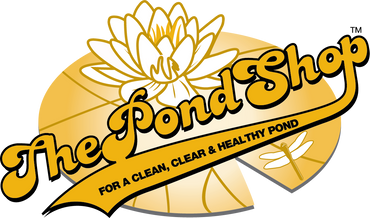Long-Leaf Pondweed

Longleaf pondweed (Also known as American Pondweed) is a native perennial aquatic plant common to the Southern Great Plains. It is rooted and typically does not grow in water more than 5 feet deep, and it also prefers mucky bottoms. The leaves of the longleaf pondweed are attached to a stem that can grow up to 6 feet long. Floating, oval-shaped leaves are 4-7 inches long and 1-2 inches wide, while the less abundant submerged leaves are smaller and blade-like. Flowers emerge from the water in densely packed spikes in July and August. Seed heads are brownish red and extend above the water on slender stalks. The longleaf pondweed is a desirable plant because it provides good habitat for small fish and invertebrates, which are eaten by fish and waterfowl. The seeds and plants also feed many bird species. However, like many aquatic plants, it can become overabundant and interfere with recreational activities.
Prevention
These plants are water and wind pollinated, but despite the prolific production of seeds, seedlings are scarce. Most of the seeds are eaten by wildlife. Longleaf pondweed mainly spreads by rhizomes and stem fragments. In late summer to fall, the longleaf pondweed forms winter buds from a few inches to more than a foot deep in the sediment at the tips of their rhizomes. These are usually dormant until the following spring. To avoid large area infestation treatments should start in early spring before plants become dense and costly to manage.
When using water facilities such as ponds, lakes, rivers; make sure all clothing, boats, trailers, and any related equipment are free of plant material prior to leaving. New infestations occur when plant fragments stick to objects used in affected waters. Clean and flush watercraft to rid them of any plant contaminants. Preventing the introduction and spread of this pondweed is the easiest and cheapest way to control it.
Biological Control
Beneficial bacteria products and enzymes such as PZ900 feed on nutrients in the water making them unavailable for plant growth. Reducing nutrients can help prevent invasion.
Physical/Mechanical Control
Repeated mechanical harvesting can help reduce stem densities, but escaped fragments can drift elsewhere and develop into new plants. It is important to remember that clearing up plant remnants will avoid larger infestations and extra work later on. Although weeding is not an enjoyable task, it may be effective in swimming and fishing areas. Physical removal in conjunction with chemical control will maximize success.
Dyes and colorants reduce aquatic plant growth by limiting sunlight penetration and reducing photosynthesis.
Aeration has also been used as a mechanical approach to hinder pondweed proliferation. The added oxygen will accelerate the decomposition process of nutrients that pondweeds need to live.
Chemical Control
When used carefully according to the label instruction, aquatic herbicides can be safe and effective management tools. The active ingredients that have been successful in treating longleaf pondweed individually or in combination are Reward and Weedtrine D, Aquathol K – liquid, Aquathol Super K – granular, and Sonar AS and Sonar RTU. A nonionic surfactant Cygnet Plus should be mixed in solution with herbicides when plants are treated.
Reward- Tribune is a fast-acting contact herbicide, highly effective in killing any part of the plant that comes into contact with.
Weedtrine D is a contact, non-volatile herbicide for use in controlling submersed and floating aquatics weeds. Weedtrine-D has rapid absorption and herbicide action.
Aquathol K (liquid) is a concentrated, highly soluble contact herbicide, effective against a broad range of aquatic plants.
Aquathol Super K (granular) this contact herbicide has been effective on pondweeds and can be mixed with copper compounds for additional efficiency.
Sonar A.S. is long-acting systemic herbicide ideal for water bodies with minimal flow. Simply mix Sonar A.S. with water and spray throughout the surface of the water or pour in different spots around the pond. Sonar A.S. does not have water use restrictions.
Sonar RTU is a long-acting, systemic, easy to use herbicide. Sonar RTU does not require mixing, simply open the bottle and treat from the shoreline.
Cygnet Plus is a nonionic wetting agent, sticker, activator, and penetrant all in one. Cygnet Plus increases the effectiveness of herbicides uptake into the plant tissue.
